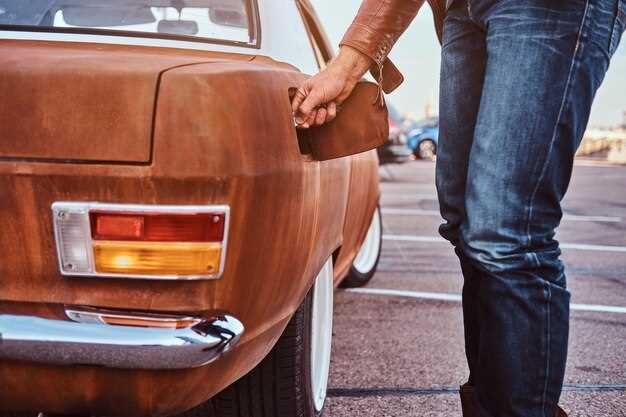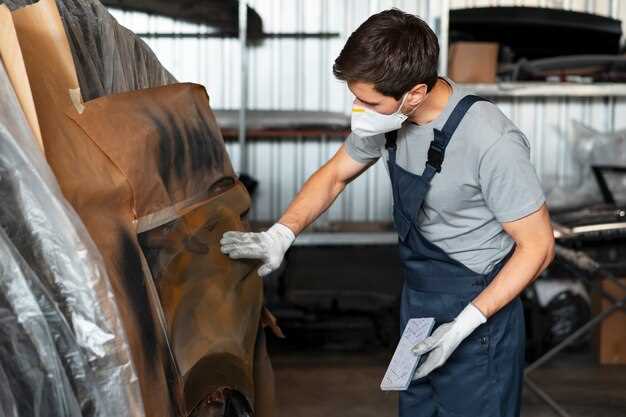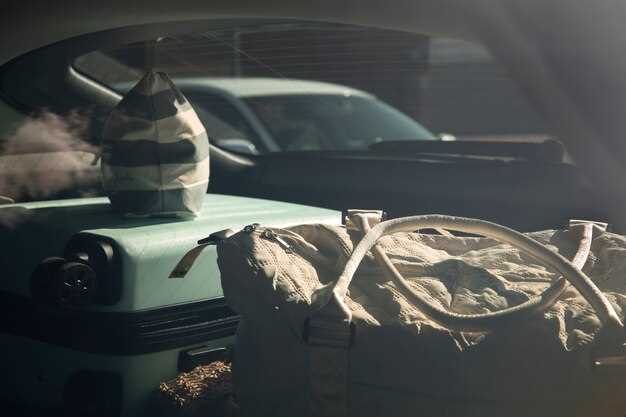
Restoring a classic car is more than just a hobby; it’s a journey that combines passion, craftsmanship, and dedication. For many automotive enthusiasts, the allure of breathing new life into a vintage machine is irresistible. However, embarking on a classic car restoration project requires careful planning and commitment. This guide will provide you with essential steps to ensure your project is both successful and enjoyable.
The first step in any restoration project is to select the right vehicle. Choosing a classic car that fits your budget, project goals, and personal taste is crucial. Consider factors such as parts availability, the condition of the car, and your skill level when making your selection. Remember, a well-chosen project car can make the difference between a rewarding experience and an overwhelming challenge.
Once you have your classic car picked out, it’s time to set clear objectives for your restoration. Are you aiming for a complete restoration to showroom condition, or do you prefer a more casual approach? Establishing your goals will help guide your decisions throughout the project, from choosing the right techniques to selecting materials. Additionally, being realistic about your timeline and budget will help you avoid frustration as the project progresses.
Throughout the restoration process, thorough research and planning are key. Familiarize yourself with the components of your classic car and seek out resources like manuals, forums, and restoration guides specific to your make and model. This knowledge will empower you to make informed decisions and tackle challenges more effectively. Stay patient and focused, as classic car restoration is a labor of love that rewards diligence and attention to detail.
Choosing the Right Classic Car for Restoration

Selecting the right classic car for restoration is a crucial step that can determine the success and enjoyment of your project. Several factors come into play when making this decision, each influencing not only the restoration process but also the finished product’s value and appeal.
First, consider your budget. Restoration costs can vary significantly based on the make, model, and condition of the vehicle. Set a realistic budget that includes the purchase price, parts, labor, and unforeseen expenses. Classic cars from the 1960s and 1970s tend to have a robust aftermarket support, which can make sourcing parts more manageable and affordable.
Next, evaluate your skill level and available resources. If you’re a beginner, start with a project that aligns with your mechanical skills. Cars that require extensive bodywork or complicated engine rebuilds might be daunting for novices. Thus, opting for a vehicle with a simpler design or one that is mostly intact can provide a more rewarding experience.
Research the specific model’s desirability and performance. Popular classic cars often have a strong community of enthusiasts and a wealth of resources, which can be invaluable during restoration. Consider factors such as rarity, historical significance, and market trends. Restoring a vehicle that appeals to a wider audience can also increase its resale value.
Condition is another critical aspect to assess. It’s essential to inspect the vehicle thoroughly for rust, structural integrity, and the condition of its components. A car with a solid frame and minimal rust can save time and money compared to a project that requires extensive repairs. A complete car is preferable, as it simplifies the restoration process, although partial projects can be rewarding if you are passionate about the car.
Lastly, don’t forget about personal preference. Choose a car that you have a genuine connection to or admire. The restoration journey can be time-consuming and challenging, and having a passion for the vehicle will help sustain your motivation. Whether it’s a muscle car, a convertible, or a classic sedan, the right choice should align with your interests, ensuring that the project remains enjoyable and fulfilling.
Essential Tools and Materials for a Successful Restoration

Restoring a classic car requires a specific set of tools and materials to ensure each aspect of the project is completed to a high standard. Investing in the following essential items will facilitate a smoother restoration process.
First, a comprehensive set of hand tools is crucial. This includes wrenches, sockets, screwdrivers, and pliers. A quality ratchet set is particularly important for efficiently removing and installing bolts and nuts. Additionally, a torque wrench is necessary for achieving the correct tension on fasteners, which is critical for engine components.
For bodywork, you’ll need tools like hammers and dollies for metal shaping, along with a body filler and sandpaper for smoothing out imperfections. An angle grinder can be used for cutting and shaping metal, while a welding machine is essential for repairing or replacing panels. A quality paint sprayer will help achieve a professional finish after restoration.
When it comes to mechanical work, having a reliable engine hoist, jack stands, and a hydraulic jack is essential for safely lifting and supporting the vehicle. A good parts washer can help clean components before reassembly. Don’t overlook a multimeter for electrical diagnostics, which will assist in troubleshooting wiring issues.
Materials are equally important. A quality car restoration book or workshop manual specific to your vehicle model serves as a valuable reference throughout the project. Stock up on rust-inhibiting primers and high-quality paints to protect the exterior of your classic car post-restoration.
Finally, safety gear cannot be neglected. Invest in gloves, goggles, and masks to protect against hazardous materials and fumes. By ensuring you have the right tools and materials, you set a solid foundation for a successful classic car restoration project.
Step-by-Step Process for Restoring Your Classic Car
The restoration of a classic car involves a methodical approach to ensure that the project is completed successfully. Here’s a detailed step-by-step guide to help you navigate through this rewarding journey.
1. Define Your Goals
Begin by establishing what you want to achieve with your restoration. Decide whether you want a show car, a daily driver, or a project just to hone your skills. This will influence decisions throughout the process.
2. Research Your Classic Car
Invest time in understanding the specific make and model you are restoring. Gather information from forums, books, and existing owners. Knowing the common issues and the parts availability will help you make informed decisions.
3. Create a Detailed Plan
Outline a project timeline, budget, and the steps required for the restoration. Break down the restoration into phases such as disassembly, bodywork, painting, mechanical repairs, and interior finishing. Setting realistic deadlines will keep you motivated.
4. Gather Necessary Tools and Materials
Before diving into the project, ensure you have the essential tools at your disposal. This may include hand tools, power tools, and specific restoration items. Also, start sourcing a list of replacement parts, either new or used.
5. Disassemble the Vehicle
Carefully take apart your classic car, documenting the process to avoid confusion during reassembly. Label all parts and take photos if needed. This phase is crucial, as it exposes any hidden issues that may need addressing.
6. Address Bodywork and Rust
After disassembly, inspect the body for rust or damage. Repair or replace panels as necessary. This may involve welding or using body fillers. Achieving a solid, rust-free foundation is critical for the later stages.
7. Undertake Mechanical Repairs
Evaluate the engine, transmission, brakes, and suspension. Depending on their condition, you may need to rebuild or replace components. Ensure that the mechanical systems are not only functional but also optimized for performance and reliability.
8. Paint the Car
Once bodywork is complete, move on to the painting phase. Choose a color scheme that aligns with your vision for the vehicle. Prepare the surface meticulously before applying the paint to achieve a smooth and durable finish.
9. Restore the Interior
Revitalize the interior by recovering seats, replacing carpets, and renewing any trim. Pay attention to upholstery and dashboard components, ensuring they reflect the car’s original character or meet your personal style.
10. Reassemble the Vehicle
Follow your documentation to reassemble the car. Ensure that all components are placed back correctly and securely. Use new fasteners where required and check compatibility with OEM specifications.
11. Test and Tune
After reassembly, conduct a thorough inspection and diagnostic check. Test drive the vehicle, listening for any unusual sounds and monitoring performance. Make adjustments as needed to ensure everything operates smoothly.
12. Enjoy Your Classic Car
Once the restoration is complete, it’s time to enjoy the fruits of your labor. Join local car shows, clubs, or online communities to share your passion and connect with fellow classic car enthusiasts.

